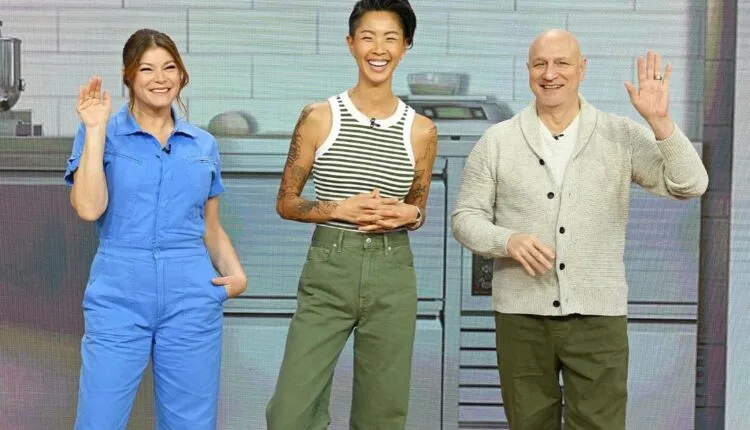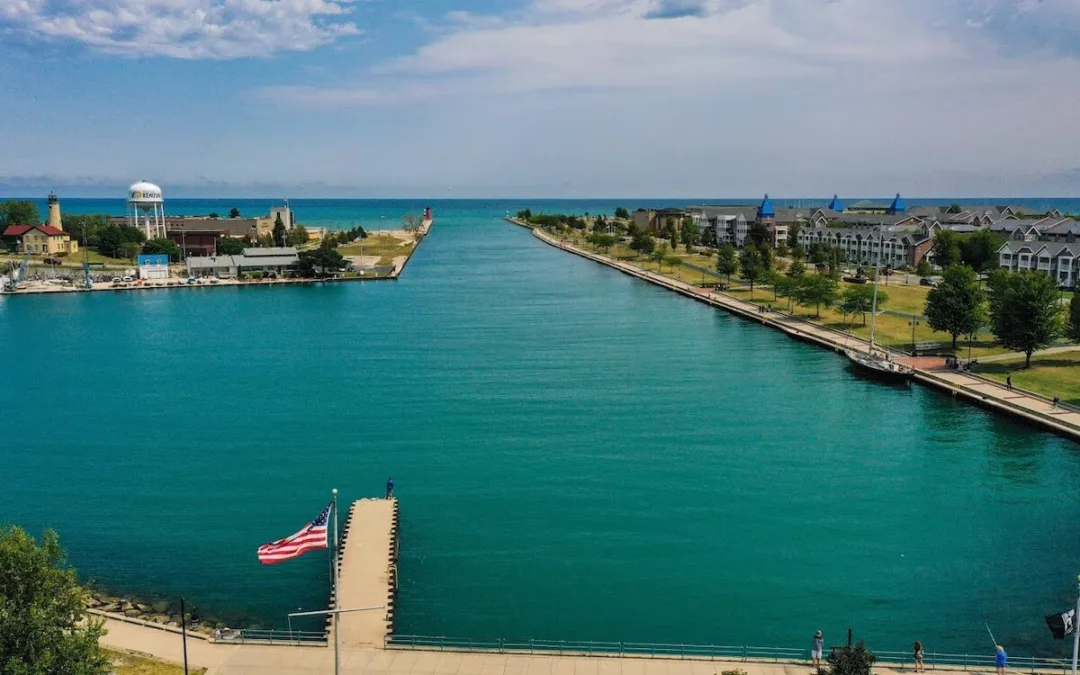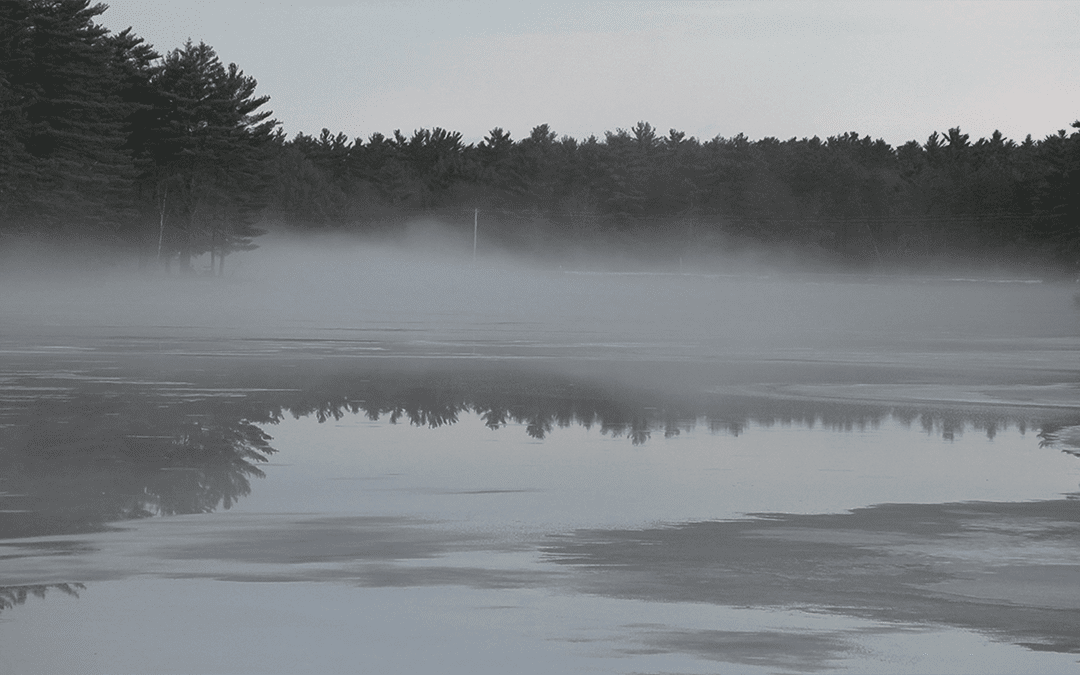
#image_title
#image_title
From faster car chargers to smaller wind turbines, “the way we look at this utility is going to totally change, and it’s going to happen” at UW-Milwaukee and elsewhere.
Just minutes from downtown Milwaukee, a small wind turbine juts out of a parking lot, standing tall above the surrounding neighborhood of industrial structures and a handful of homes, casting a narrow shadow over an unassuming building adorned with the University of Wisconsin-Milwaukee logo.
That wind turbine, in addition to a small solar array on the premises, are very visible signs of the green energy research UW-Milwaukee faculty and students perform just inside the building—the very research that prompted a May visit from Vice President Kamala Harris as she touted President Joe Biden’s American Jobs Plan, which would put billions of dollars into research initiatives just like the ones in Milwaukee.
From lightning-fast car chargers that can shave hours off a recharge to teams of students offering free consultations to businesses looking to save on energy costs and reduce their carbon footprint, UWM’s University Services & Research Building is showing how Wisconsin can be a research leader in reducing carbon emissions.
“It’s going to be great,” said Dr. Andrew Graettinger, associate dean of UW-Milwaukee’s College of Engineering & Applied Science. “Good for the environment, good for jobs—there’s all this new infrastructure that has to be created too. So there’s a lot of pluses.”
The research, Graettinger said, is becoming increasingly valuable as the nation and world pivot to greener energy sources to address the growing climate crisis. New developments, such as the wind turbine in the parking lot, stand to fundamentally change the way green energy is implemented in the US.
While the most common image of a wind turbine is a gigantic tower visible for miles, the small turbines being developed at UWM are getting smaller and quieter every day. The ultimate goal is to make the turbines powerful, quiet, and small enough to be deployed in urban neighborhoods.
Doing so is key to developing energy microgrids—small-scale energy systems that can power the immediate surrounding areas independent of a city power grid. Microgrids powered by wind or solar energy come with the obvious benefit of environmental friendliness, Graettinger said, but they also serve to make areas more resilient to power outages and natural disasters because there are fewer homes and businesses reliant on a single grid.
“We know things are gonna break, grids are gonna break,” Graettinger said. “But if one part of the grid breaks and 90% of it can keep going, that’s resilience. Those folks in the part that don’t have power can easily get food and water medical attention in areas that do have power.”
Another one of the top research projects at UWM, the quick car chargers, received a special spotlight during Harris’ visit. While electric vehicles usually take hours to reach a full charge, the quick chargers can fill a car’s battery in as little as 15 minutes.
On top of their speed, the chargers are compact, meaning many could be placed in a row outside a store, apartment building, or gas station, said Ezana Mekonnen, a UWM graduate and chief technology officer for Imagen Energy, the company developing the chargers. Imagen is based in the clean energy labs, and Mekonnen runs the company with other researchers at the school.
EARLIER: In Milwaukee, Harris Touts Biden’s Proposed Investments in Research and Development
Mekonnen said if compact fast-chargers become more widely available, people will be more willing to purchase an electric car because they will be confident they can find a place to charge while traveling without needing to stop for hours. That’s both a win for the economy and environment, he said.
“It [will] incentivize people to buy the car more than even the tax break you get from electric cars,” Mekonnen said.

While that change could be easier on an individual basis, it can be harder for manufacturers to make investments in energy efficiency. That’s where UWM’s Industrial Assessment Center—backed by the US Department of Energy—can come in. The center will send a team of consultants to small and medium businesses free of charge, and the team will identify areas a company can save on energy costs while simultaneously cutting down on carbon emissions.
“You know, we are talking about greenhouse gas emissions due to coal-generated power,” said Dr. Wilkistar Otieno, co-director of the center and chair of the UWM Industrial and Manufacturing Engineering Department. “If each of us can contribute in any way, shape, or form to reduce that footprint, it’s tremendous.”
To date, the center has performed 155 assessments, saving companies a combined $13.2 million, according to the center’s website. Sixty-eight students have received training through the center. UWM is home to Wisconsin’s only Industrial Assessment Center; the next-closest is the University of Illinois at Chicago.
When students give recommendations, they publish their findings in scientific journals—while keeping businesses confidential—to further energy research.
“The way we look at this utility [electricity] is going to totally change, and it’s going to happen,” Graettinger said. “It’s not something that’s in the research lab anymore. It’s in our driveway more and more.”

A small wind turbine helps power UW-Milwaukee’s University Services & Research Building. (Photo by Jonathon Sadowski) 
A small array of solar panels helps power UW-Milwaukee’s University Services & Research Building. (Photo by Jonathon Sadowski) 
A small solar panel array and wind turbine provide clean energy outside the UW-Milwaukee University Services & Research Building. (Photo by Jonathon Sadowski) 
The “nozzle” of an Imagen Energy electric vehicle charger that can fill batteries in as little as 15 minutes. (Photo by Jonathon Sadowski) 
A compact Imagen Energy electric car charger. The chargers, developed at UW-Milwaukee, can fill a car battery up in as little as 15 minutes as opposed to the typical hours-long charging time. (Photo by Jonathon Sadowski)
Politics

Biden makes 4 million more workers eligible for overtime pay
The Biden administration announced a new rule Tuesday to expand overtime pay for around 4 million lower-paid salaried employees nationwide. The...

Biden administration bans noncompete clauses for workers
The Federal Trade Commission (FTC) voted on Tuesday to ban noncompete agreements—those pesky clauses that employers often force their workers to...
Local News

Readers Poll: Top Bowling Alleys in Wisconsin
Looking for the best bowling in Wisconsin? Look no further! Our readers have spoken in our recent poll, and we have the inside scoop on the top...

8 Wisconsin restaurants Top Chef judges are raving about
Top Chef’s 21st season is all about Wisconsin, and on-screen, it’s already apparent that the judges feel right at home here. But, while filming in...








